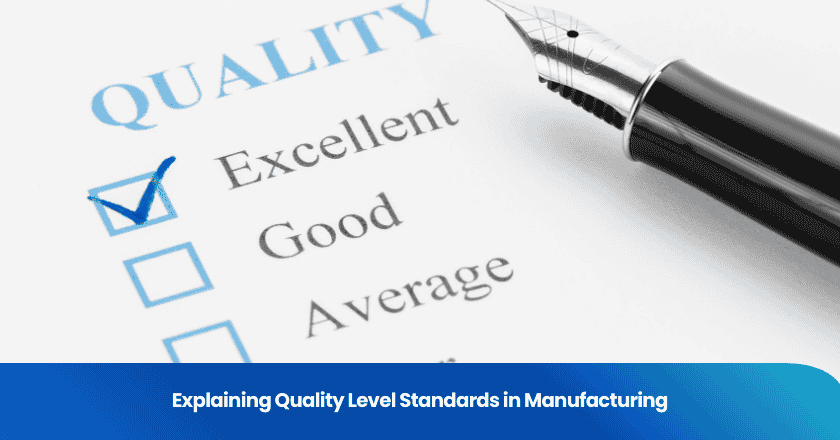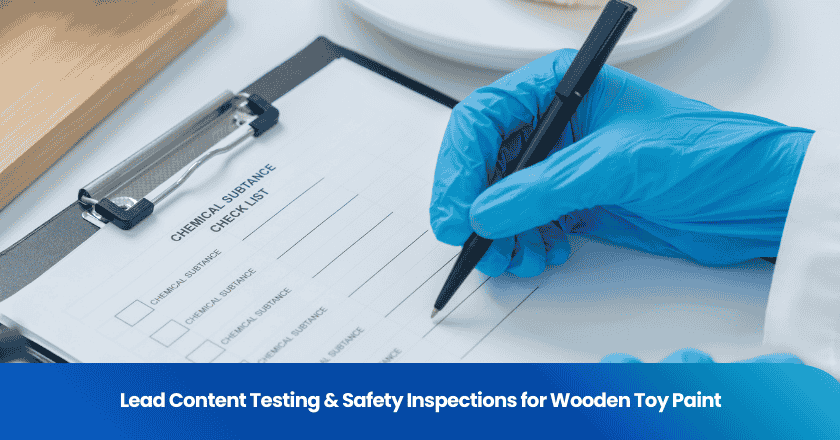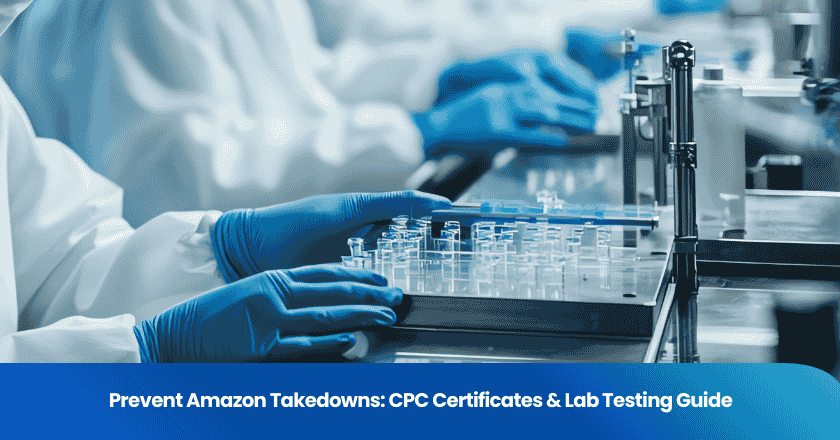
Quality level standards set clear expectations for how a product should perform and look. rely on these standards to ensure each product meets consistent requirements. When you follow strict quality guidelines in manufacturing, you create efficient processes and eliminate guesswork. High-quality products increase customer satisfaction and loyalty. Level quality helps you build a reputation for reliability, which can open new market opportunities and partnerships.
Key Takeaways
- Quality standards set clear expectations for product performance and appearance, ensuring consistency and customer satisfaction.
- Implementing effective quality assurance processes helps prevent defects and maintain high standards throughout production.
- Understanding Acceptable Quality Level (AQL) is crucial for determining the maximum number of defects allowed in product inspections.
- Combining traditional inspection methods with modern digital tools enhances defect detection and maintains consistent quality.
- Prioritizing quality leads to increased customer loyalty, improved operational efficiency, and long-term business success.
Defining Quality
What Is Quality?
You encounter the term "quality" every day in manufacturing. Quality means your product meets specific standards and satisfies customer expectations. In practice, you achieve quality by following a systematic process. You inspect raw materials, monitor production, and test the final product. Quality assurance ensures every product matches the standards you set. You must adhere to industry regulations and use robust quality management systems. Continuous monitoring helps you prevent defects, maintain consistency, and optimize efficiency. Different sectors interpret quality in unique ways. For example, pharmaceuticals focus on safety and efficacy, while general manufacturing emphasizes meeting customer requirements. Lean manufacturing highlights continuous improvement and customer focus.
| Manufacturing Sector | Quality Interpretation |
|---|---|
| Pharmaceuticals | Emphasizes statistical process control (SPC) and quality management systems (QMS) to ensure drug safety and efficacy. |
| General Manufacturing | Focuses on quality control and assurance processes to meet customer requirements and expectations. |
| Lean Manufacturing | Implements continuous improvement and customer focus as part of total quality management. |
You face several challenges when defining quality. Regulatory compliance can be complex. Skilled labor shortages make it harder to maintain high standards. Effective inventory management is essential to balance stock and minimize costs. The complexity of manufacturing processes adds another layer of difficulty.
Key Terms: Defects and Standards
You must understand key terms to manage quality effectively. A defect is anything that does not meet the customer’s requirements. Defects include defective materials, manufacturing errors, and deviations from standards. You classify defects based on severity. Critical defects can threaten safety or function, while minor defects may only affect appearance. Standards define the minimum acceptable level for your product. You use standards to measure quality and guide production decisions.
Manufacturers monitor and control defect rates to meet quality standards. You can:
1. Implement statistical process control to track production in real time.
2. Enhance employee training to reduce errors.
3. Improve equipment maintenance to prevent breakdowns.
4. Strengthen incoming material inspection.
5. Establish root cause analysis protocols for critical defects.
6. Reduce variation in production.
7. Use continuous improvement methods.
8. Monitor supplier quality.
You aim to keep defect rates low. Excellent quality control means less than 1% defects. Acceptable rates fall between 1% and 3%. Rates above 3% indicate critical defects and require immediate action.
| Defect Rate Category | Description |
|---|---|
| <1% | Excellent quality control; minimal defects |
| 1%–3% | Acceptable; monitor for trends |
| >3% | Critical; immediate corrective actions required |
Defective products can damage your reputation and lead to costly recalls. You must address critical defects quickly to maintain trust and meet standards.
Level Quality in Manufacturing
Setting Level Quality Standards
You set level quality standards in manufacturing by combining proven methods, international guidelines, and regulatory requirements. These standards define the minimum acceptable performance and appearance for every product you create. You rely on a range of techniques to establish and maintain these standards.
| Method | Description |
|---|---|
| Inspection | You examine products for defects or deviations from specifications, ensuring they meet quality standards. |
| Sampling | You inspect a representative sample of a batch, using statistical probability to make quality decisions. |
| Six Sigma | You apply data-driven techniques to reduce defects and achieve near-perfect level quality. |
| Failure Mode and Effect Analysis | You identify potential failure modes and prioritize them to prevent defects before they occur. |
| Control Charts | You use graphical tools to monitor process stability and track variations in production. |
| Design of Experiments | You test multiple variables in a structured way to optimize product quality. |
| Root Cause Analysis | You identify the root causes of defects to prevent future quality issues. |
| Pareto Analysis | You prioritize the most impactful quality issues based on the Pareto Principle. |
| Total Quality Management | You improve quality across all aspects of your organization. |
| Benchmarking | You compare processes or products against industry leaders to identify gaps and implement improvements. |
You also reference international standards when setting level quality in manufacturing. These standards help you align your processes with global expectations and regulatory requirements.
| Key Component | Description |
|---|---|
| Acceptable Quality Level (AQL) | You set the maximum number of defective items allowed in a batch for it to be considered acceptable. |
| Inspection Levels | You determine how much of a product batch should be sampled. |
| Sampling Plans | You choose single, double, or multiple sampling based on risk tolerance and cost considerations. |
Regulatory requirements play a major role in shaping level quality standards. For example, Good Manufacturing Practice (GMP) regulations require strict adherence to safety and quality protocols. You must follow these rules to protect consumers and the environment. National governments, such as the US FDA, enforce these standards through facility inspections. Poor adherence can lead to health risks and costly product recalls.
| Evidence Description | Impact on Quality Standards |
|---|---|
| GMP regulations mandate strict adherence to safety and quality protocols. | Ensures consistent production and control according to established quality standards, protecting consumers and the environment. |
| Poor adherence to GMP can lead to health risks. | Highlights the importance of maintaining hygiene and preventing contamination in manufacturing processes. |
| GMP standards enhance product safety and quality. | Positively impacts the reputation of manufacturers and reduces the likelihood of product recalls. |
| Enforcement by national governments, such as the US FDA, includes facility inspections. | Ensures compliance with regulations, and serious violations can lead to product recalls, affecting manufacturers' operations and profits. |
You maintain level quality by using advanced tools and technologies. Manufacturing Execution Systems (MES) standardize quality control processes and improve data accessibility. IoT sensors and real-time monitoring allow you to detect defects quickly and adjust machine settings. Cloud computing centralizes data collection and trend analysis, helping you optimize resource allocation and predict maintenance needs.
Tip: You can strengthen level quality by combining traditional inspection methods with modern digital tools. This approach helps you catch defects early and maintain consistent standards across all production lines.
Why Level Quality Matters
You benefit from maintaining high level quality in manufacturing in several ways. Consistent level quality leads to reliable products, which builds trust with your customers and partners. When you standardize your processes and focus on continuous improvement, you deliver exceptional products every time.
- The implementation of ISO 9001 helps you refine operations and enhance productivity, leading to improved product consistency.
- Standardized processes contribute to consistency, while continuous improvement ensures exceptional product delivery.
- Batch processing involves precise measurement, standardized conditions, and real-time monitoring, all of which enhance product quality and consistency.
You increase customer satisfaction by focusing on level quality. When your products meet customer needs and expectations, you build loyalty and encourage repeat purchases. Quality control guarantees that your products meet expectations, which improves production efficiency and reduces costs. Implementing ISO 9001 allows you to resolve issues quickly and minimize errors, boosting reliability and customer trust.
High level quality also supports your business profitability. Reliable products encourage repeat business and strengthen your reputation. Efficient inventory management and streamlined operations help you maintain profitability over the long term.
Note: By prioritizing level quality, you create a cycle of customer satisfaction, repeat business, and sustained profitability. This approach positions your company for growth and success in competitive markets.
Quality Assurance Process
Quality Assurance vs. Quality Control
You often hear the terms quality assurance and quality control used interchangeably, but they serve distinct roles in manufacturing. Quality assurance focuses on preventing defects by developing robust systems and policies. You design processes that ensure every product meets standards before production begins. Quality control, on the other hand, centers on inspection and testing after production. You identify defects and take corrective action to maintain product quality.
| Attribute | Quality Assurance (QA) | Quality Control (QC) |
|---|---|---|
| Purpose | Process prevention | Product inspection |
| Responsibility | System and policy development | Inspection and testing execution |
| Approach | Preventive and systematic | Corrective and analytical |
You take a proactive approach with quality assurance, aiming to prevent defects before they occur. Quality control reacts to issues by inspecting finished products and verifying compliance with standards. Quality assurance involves the entire team, while quality control relies on dedicated personnel for inspection and assessment. Many manufacturers mistakenly believe that quality control alone is sufficient, but neglecting quality assurance can lead to wasted resources and missed opportunities for improvement.
Tip: Quality assurance defines the standards and procedures for production, while quality control verifies that the finished product meets those standards.
Implementing Quality Assurance
You strengthen your manufacturing operations by implementing a comprehensive quality assurance process. Start by identifying requirements, including customer expectations and regulatory standards. Define a clear quality policy and set measurable objectives. Map out each process to ensure efficiency and consistency. Document every step and control all documentation to maintain uniformity.
Follow these practical steps to build an effective quality assurance process:
1. Encourage collaboration across teams to integrate quality at every stage.
2. Promote continuous improvement by regularly reviewing processes and gathering feedback.
3. Automate inspection and monitoring using digital tools for real-time quality assessment.
4. Standardize procedures to ensure consistent product quality.
5. Use data-driven decision making to identify root causes and prioritize improvement.
6. Invest in employee training on quality assurance methods and standards.
7. Conduct root cause analysis and implement corrective actions to address defects.
You can leverage methodologies such as Six Sigma, Lean Manufacturing, and Total Quality Management to drive improvement. Quality management software streamlines the quality assurance process and automates inspection tasks. Track effectiveness over time using dashboards, control charts, and regular quality audits. Continuous improvement metrics help you maintain a competitive edge and reduce risk.
| Tool/Methodology | Description |
|---|---|
| Six Sigma | A data-driven approach to eliminate defects and improve processes. |
| Lean Manufacturing | Focuses on minimizing waste and improving process efficiency. |
| Total Quality Management | Organization-wide improvement through continuous improvement. |
| Quality Management Software | Digital tools that automate quality assurance processes and inspection. |
You achieve measurable benefits by implementing quality assurance, such as improved products, greater consistency, effective compliance, and reduced risk. Enhanced efficiency and better decision-making follow as you transform operations and prioritize improvement.
Note: Ongoing tracking and assessment are essential for long-term success. Quality assurance is not a one-time effort but a continuous journey toward excellence.
AQL and Acceptance Quality Limit
What Is AQL?
You encounter the term aql frequently in manufacturing. It stands for acceptable quality level, a key metric in quality control. When you perform product inspection, you use aql to set the maximum number of defects allowed in a sample before you reject the entire batch. This process helps you maintain consistent product quality and ensures that your products meet customer expectations.
- Acceptable quality level is a crucial metric in quality control processes.
- It defines the maximum number of defects allowed in a random sample before the entire batch is considered unacceptable.
- This statistical tool helps you maintain consistent standards by setting specific thresholds.
AQL is defined as the "quality level that is the worst tolerable process average when a continuing series of lots is submitted for acceptance sampling."
You rely on aql guideline documents and international standards to determine how many units to inspect and how many defects you can tolerate. Standards such as ISO 2859-1, ANSI-ASQ Z.14, GB/T 2828.1, and BS 6001 guide you in setting aql levels for different industries. These standards help you align your process with global expectations and regulatory requirements.
Acceptance Quality Limit Explained
You use acceptance quality limit to decide whether to accept or reject a batch during product inspection. This process involves several steps, each designed to ensure that your products meet the required standards. You start by setting the aql level based on the type and severity of defect. Critical defects usually have a lower aql level, while minor defects allow for a higher limit.
1. Select the aql level based on defect types:
- Critical Defects (AQL 0.1–0.65)
- Major Defects (AQL 1.0–2.5)
- Minor Defects (AQL 4.0–6.5)
2. Use the aql table to determine sample size and acceptance levels.
3. Conduct the product inspection based on the determined sample size.
4. Count defects and compare against aql limits:
- Accept the batch if defects are within limits.
- Reject the batch if defects exceed limits.
5. Report findings and decide on next steps.
You must understand that the acceptance quality limit is not a fixed number. It changes depending on your process, product type, risk tolerance, and customer requirements. You adjust your aql level setting to match the needs of your business and the expectations of your clients.
Using AQL in Inspections
You apply aql during product inspection by following a structured process. This process ensures that you make objective decisions about product quality and maintain high standards across your operations.
1. Determine the lot size. You count the total number of units in your production batch.
2. Choose an inspection level. You select from three general and four special levels, which dictate your sample size. Higher inspection levels mean larger samples.
3. Identify aql levels for each defect category: critical, major, and minor.
4. Use the aql table (such as ANSI/ASQ Z1.4 or ISO 2859-1) to find your sample size and acceptable defect limits.
5. Inspect and classify defects. You examine the selected sample and categorize each defect.
6. Make a decision. If defects in the sample exceed the acceptable limit, you reject the batch.
You can use different sampling methods during product inspection. The most common methods include:
| Sampling Method | Description |
|---|---|
| Single sampling | You make a decision after inspecting one sample. |
| Double sampling | You draw a second sample if the first is inconclusive. |
| Multiple sampling | You subdivide the inspection process to enhance efficiency. |
You must select the sampling method that best fits your process and product type. Each method offers different levels of efficiency and risk management.
When you apply aql in product inspection, you follow international standards and guidelines. You consider factors such as product type, defect severity, risk tolerance, industry standards, customer requirements, lot size, inspection level, testing cost, and quality history. These factors influence your aql level setting and help you maintain consistent product quality.
Practical Example: AQL in Action
You can see the impact of aql in real-world product inspection scenarios. For example:
- An Amazon seller improved product ratings from 3.5 to 4.7 stars by using aql-based inspections, recovering significant revenue and enhancing product quality.
- The "Probability of Accepting and Rejecting" case study demonstrates how aql helps you make statistical decisions about batch acceptance.
- Douglas E. Purdy's case study shows that aligning customer expectations with operational capabilities is essential for successful aql evaluations.
You use aql to protect your business reputation and ensure that your products meet customer expectations. By following a structured process and using aql tables, you make informed decisions about product quality and maintain high standards in every product inspection.
Tip: You can strengthen your process by combining aql guidelines with advanced digital tools. This approach helps you catch defects early and maintain consistent standards across all product inspection activities.
You build long-term business success by understanding and applying quality level standards. You create clear benchmarks, foster a culture of excellence, and ensure every customer receives reliable products.
Establishing clear and measurable quality benchmarks is the foundation of any effective quality control system.
Consistent and thorough inspection protocols are critical for identifying and addressing defects before products reach the customer.
- Companies with ISO 9001 certification experience higher customer satisfaction and a 13% increase in market share.
- You see a 15% boost in operational efficiency when you prioritize customer satisfaction and quality at every level.
You can review your current processes, train your team, and learn more about AQL to improve customer satisfaction and trust.
FAQ
What is the difference between AQL and quality standards?
AQL sets the maximum number of defects you can accept in a sample. Quality standards define the overall requirements your product must meet. You use AQL during inspections to check if your products align with those standards.
How do you choose the right AQL level?
You select the AQL level based on product type, customer expectations, and risk tolerance. Critical products require lower AQL values. You should always review industry guidelines and discuss requirements with your clients.
Why is sampling important in quality control?
Sampling lets you inspect a small portion of a batch instead of every item. You save time and resources while still ensuring product quality. Proper sampling helps you make reliable decisions about accepting or rejecting batches.
Can you improve quality without increasing costs?
You can improve quality by optimizing processes, training employees, and using data-driven methods. Focus on prevention and continuous improvement. These steps help you reduce waste and defects without raising production costs.
What happens if a batch fails the AQL inspection?
If a batch fails, you must reject it or rework the products. You should investigate the root cause of defects and take corrective action. This process helps you prevent similar issues in future production runs.
Grow your business with TradeAider Service
Click the button below to directly enter the TradeAider Service System. The simple steps from booking and payment to receiving reports are easy to operate.



